Maryborough Heritage Walking Tour

Maryborough is full of history and heritage. Discover evidence of the first inhabitants and reimagine the heady heyday of the gold rush.
The Dja Dja Wurrung Aboriginal people (also known as the Djad-jawurrung or Jajowurrong tribes) called the Maryborough district Tuaggra, meaning "leaves of the Yellow Box Gum". The first white settlers to arrive were the Scottish Simson brothers, who began sheep farming in the district as early as 1840. They took up a great tract of land extending from Castlemaine to Avoca. Donald Simson built Charlotte Plains homestead north of Carisbrook on Deep Creek.
When gold was found in 1848, the population quickly grew, and by 1856 there were up to 53,000 people living in the district. Maryborough was named after Commissioner James Daly's home in Ireland.
Map of Maryborough Heritage Walking Tour Locations
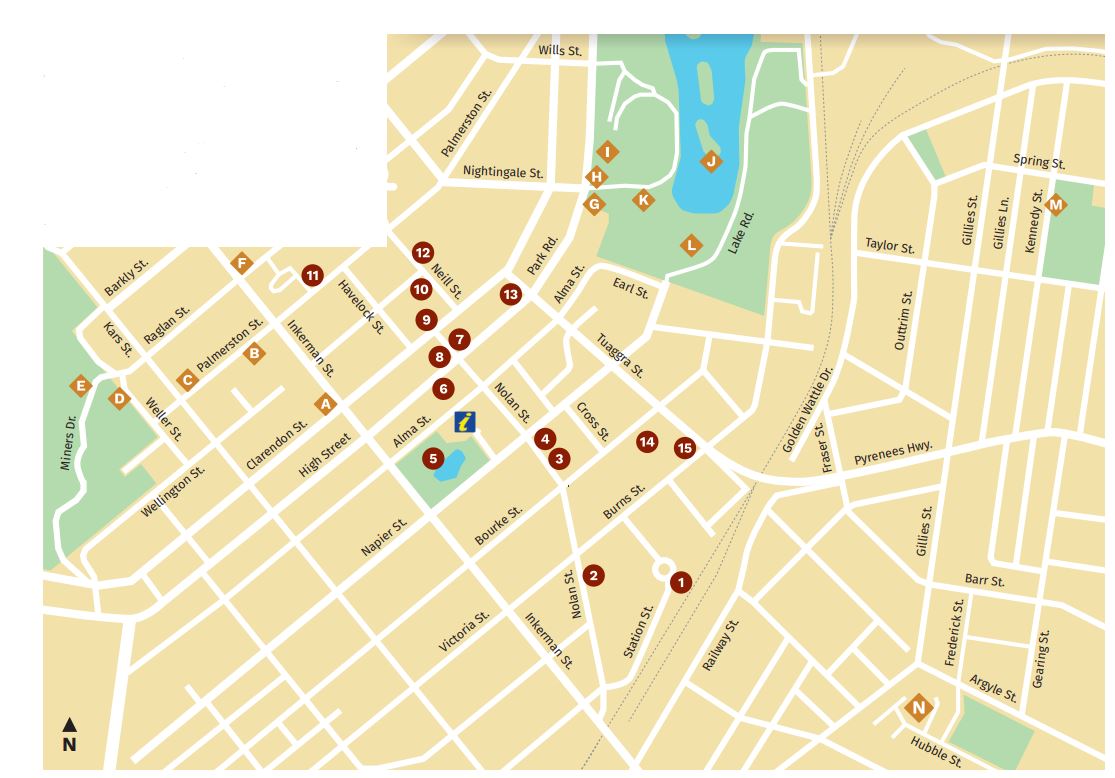
1. Maryborough Railway Station
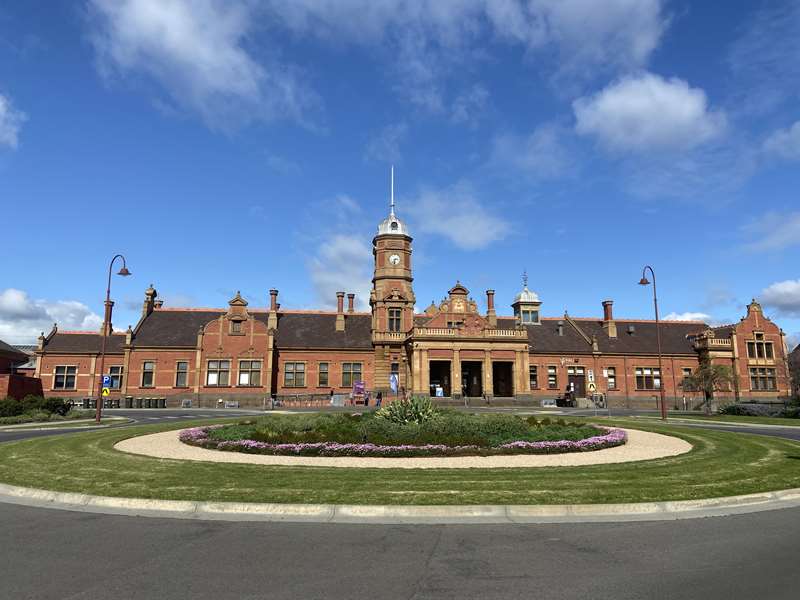
The magnificent Maryborough Railway Station was built in 1890. This building was remembered by Mark Twain as 'a station with a town attached'. It features tessellated floor tiles from Cawkwells in Malvern who also laid the tiles in Parliament House in Melbourne. The building was designed with Queen Anne style red brick displaying hallmarks of the Anglo-Dutch style. The outside roof features various types of Dutch gables with faceted chimneys and the inside displays beautiful timber ceilings.
2. The School of Mines
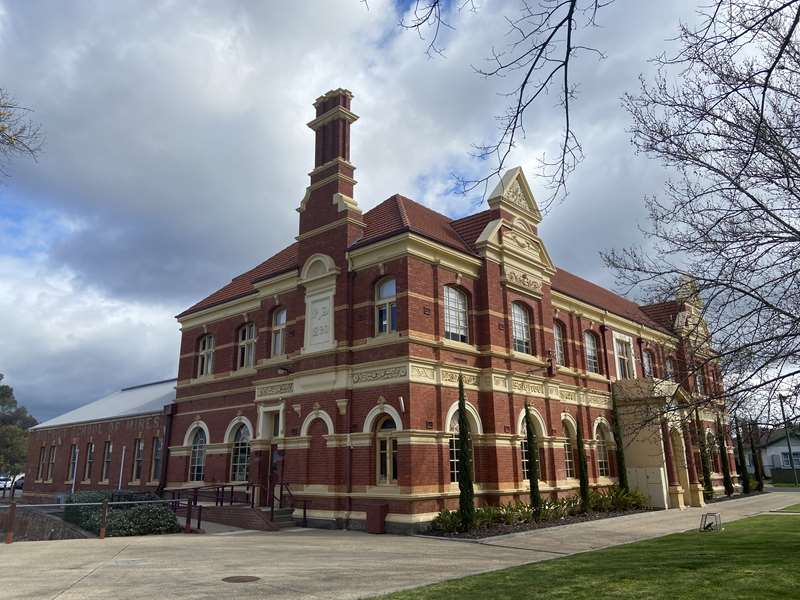
The foundation stone was laid in 1890 and the east wing was opened the following year. In 1903 it was renamed "Maryborough Technical School", becoming the District Secondary College in 1992. In 2008, it became the home of the Central Goldfields Shire Council.
3. The Paramount Cinema
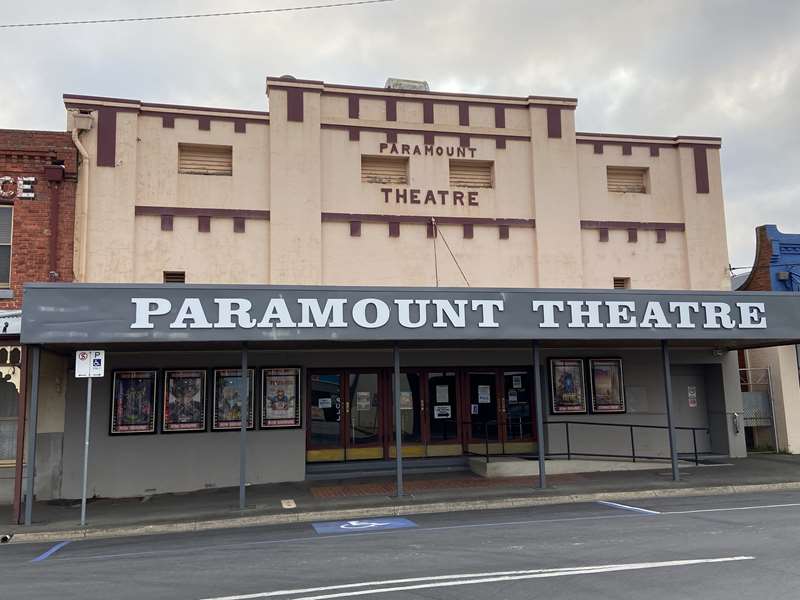
This theatre was constructed in 1926 and could hold 1,400 patrons. This Art-Deco style building now houses a twin cinema and has recently been renovated to its former glory.
4. Mandeville Coffee Palace
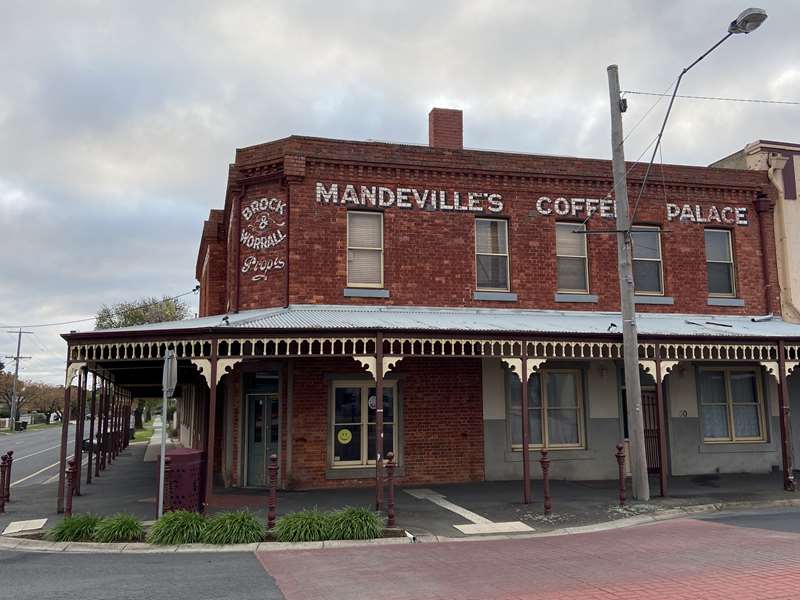
The two storey red brick building was originally built as the Yorkshire Hotel / Brewery in 1863. Delicensed in the latter half of the 1800's to be taken up as a Coffee Palace by Mrs Mandeville. The building has been restored several times. It became flats in the 1930's and a cafe once again in 2018.
5. Phillips Botanical Gardens
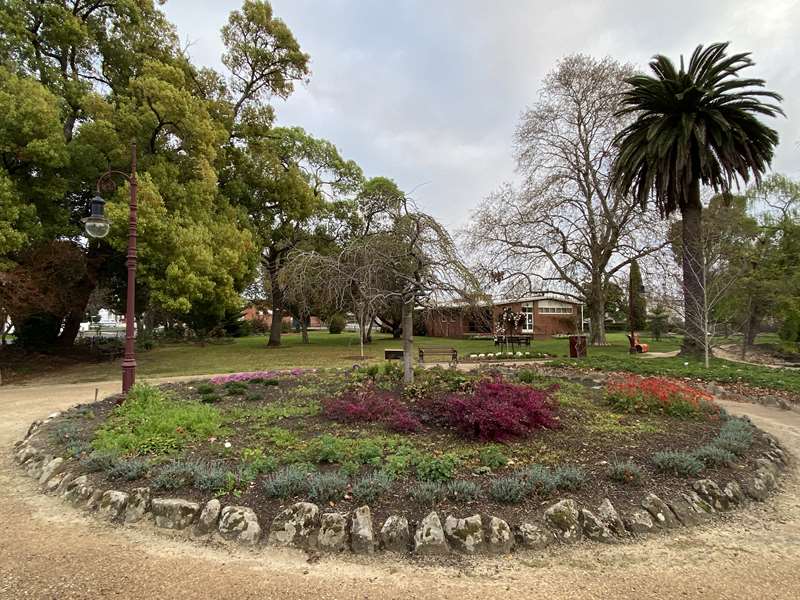
Established in 1874 named after H. N. Phillips the Town Clerk of Maryborough. The site was originally cleared to create the Municipal Dam, supplying water for fire-fighting and town use. Lack of water was a problem in Maryborough's early days. Prisoners from the local gaol built a bowling green, which was later transferred to High St. There are many exotic trees, including the Bunya Bunya Pine. These have large cones weighing up to 8 kilograms, which usually fall in March/April.
6. State Bank
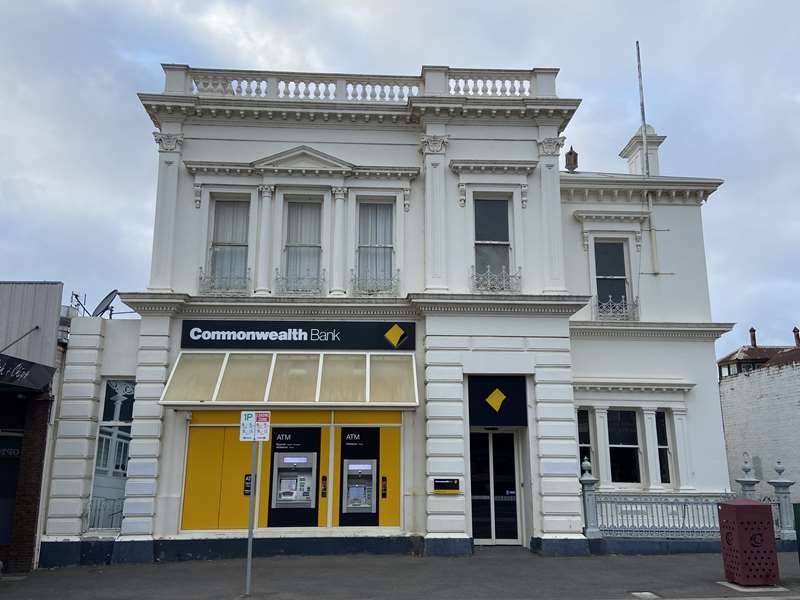
This State Savings Bank of Victoria building was designed by Ballarat Architect, H. R. Caselli in 1886, replacing the previous buildings of wood and red brick. It has been repurposed several times as an Art Gallery, shops, and a restaurant until it returned to its original purpose in 2005 as the Commonwealth Bank.
7. The Bull & Mouth Hotel
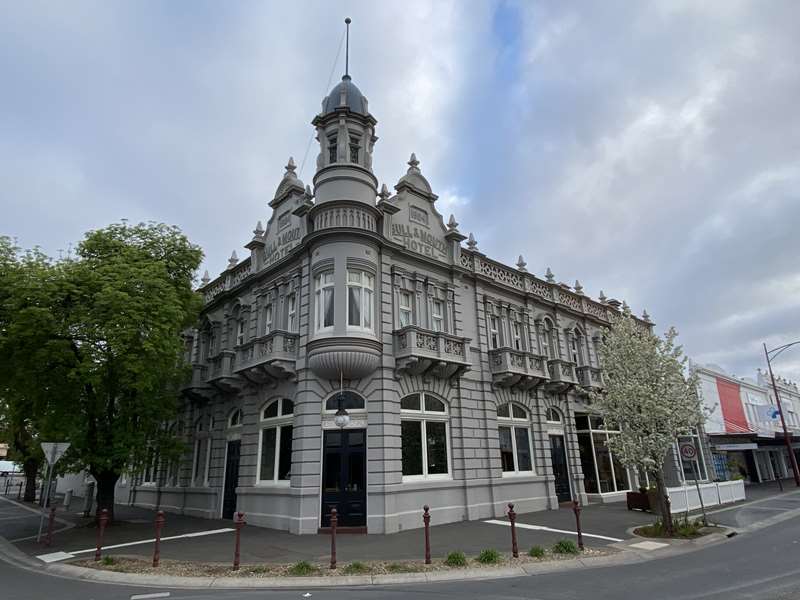
Originally built in 1854, the hotel was demolished and then rebuilt in 1904. Redesigned with a new Italian renaissance style including a dome capped circular turret, it was built by W. J. Dingle. The Bull and Mouth Hotel was one of the first in Maryborough.
8. AMP Building
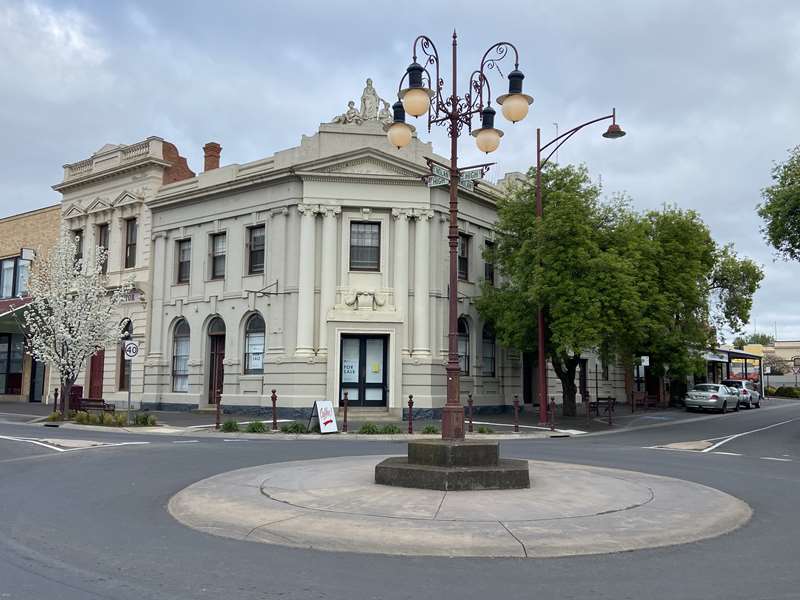
The AMP Building was built in 1926 by Messrs Farnsworth and Sparks. Note the figures on top of the building, with the symbols Amicus Ray Incerta ("a certain friend in uncertain times"). The symbol of a lady holding scales interprets to "rich or poor, equal and fair justice to all".
9. McLandress Square
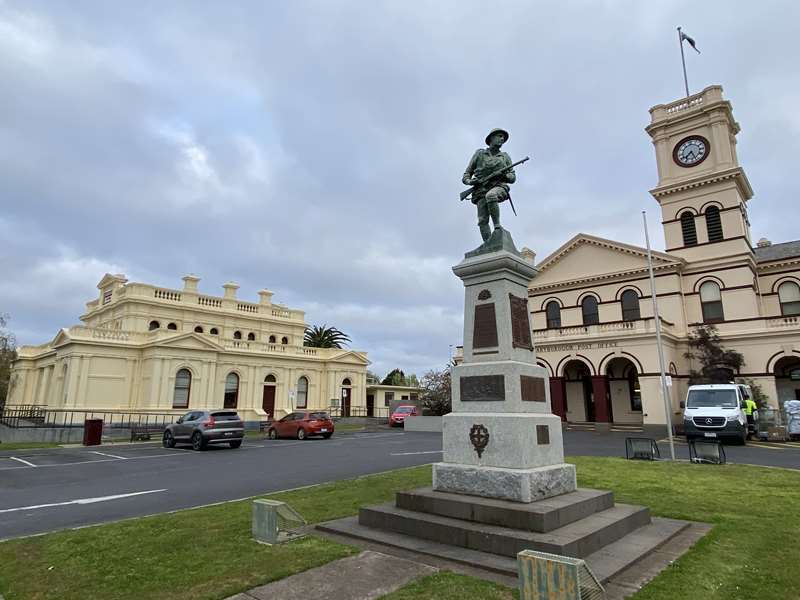
Arguably one of the finest clusters of civic buildings in country Victoria. The Court House opened in 1893; the large pavers of bluestone were obtained from Castlemaine Quarries, some weighing over a ton. The Post Office was built in 1878 of first class stone mined from nearby McCallum's Creek and the clock tower added in 1879. The original Town Hall was built in 1858 and superseded by the present building in 1887. It was built by George Clayfield, who was the builder of the Daylesford Town Hall. The fountain in front of the Town Hall was built as a memorial to Corporal Gerald Wilkinson, who was the first soldier from Maryborough to die in the Boer War.
10. Old Fire Station
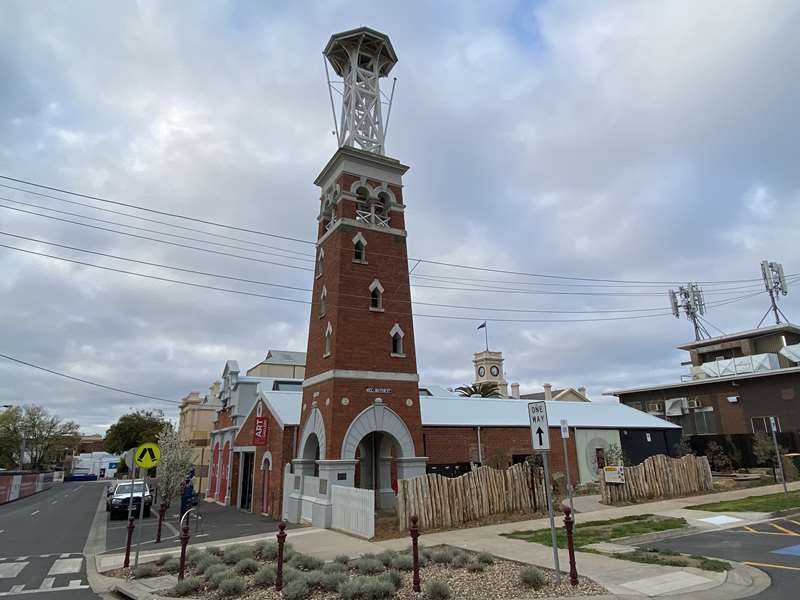
One of the town's earliest red brick structures built in 1861. In 1862 the bell was raised to the top of a new wooden tower, a gift from the Simson Brothers of Charlotte Plains. The existing tower, the third one on the site, was constructed in 1888. Engine sheds were added early in the 20th Century. In 1982 the Fire Brigade moved to a new site in Napier St. The Central Goldfields Art Gallery is now located here.
11. Former Maryborough High School
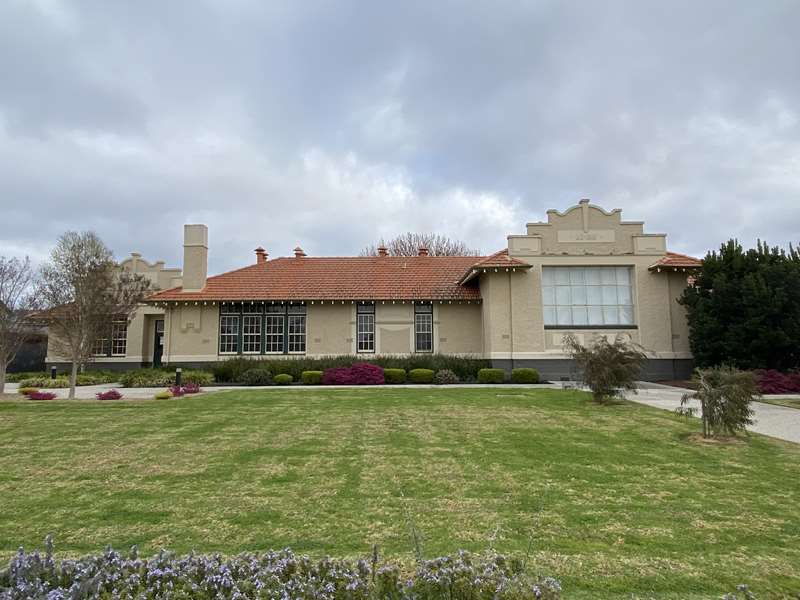
Maryborough High School was built in 1912 on this site. It was one of the earliest state high schools built in Victoria using some stone from the old gaol. It commenced with 153 students in 1916 and had approximately 400 students in 1960. It closed in 2007 when all local state owned schools were amalgamated onto one new site. Now an independent living and supported accommodation aged care facility.
12. Court of Mines
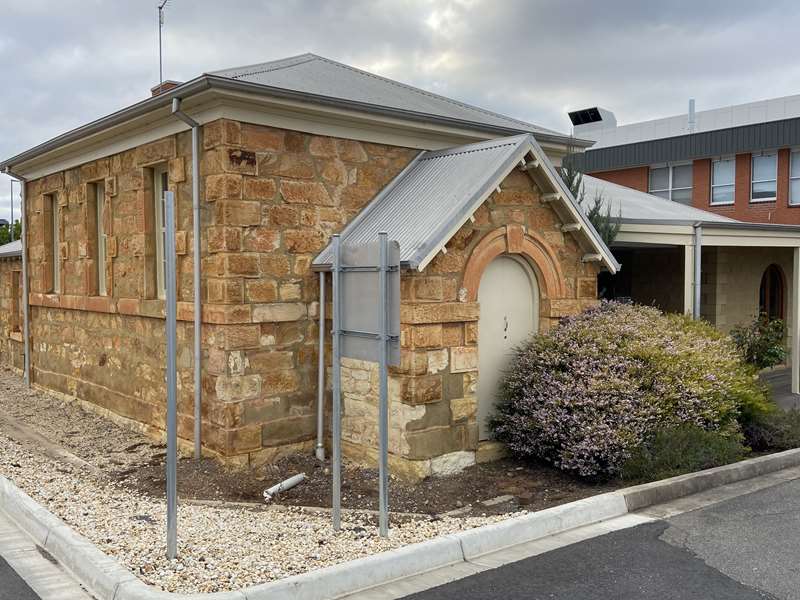
Built in 1858 by Alexander Amos & Co. from yellow Porphyry stone supplied locally by the Bristol Hill Quarry. The Gold Chamber was first used as a Court House, then later as a Mining Board Office. This is the oldest public building in Maryborough and is classified by the National Trust.
13. The Old Library
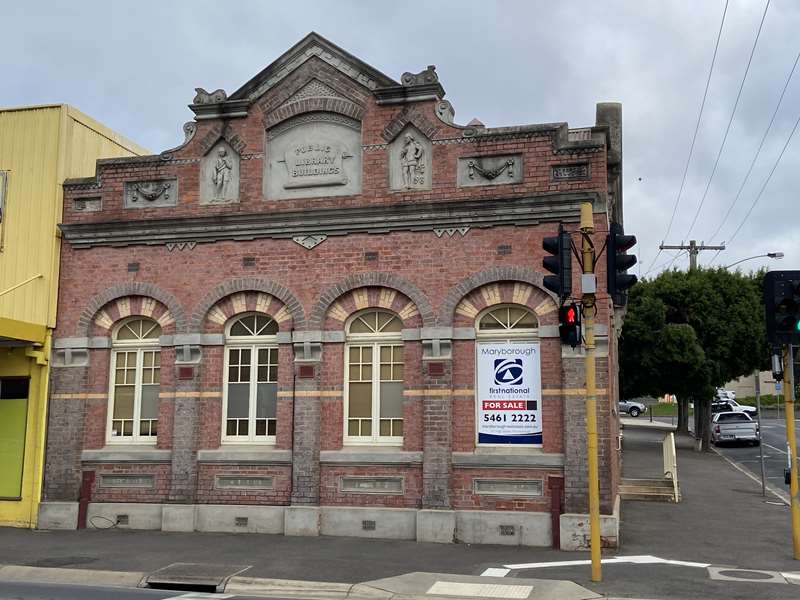
Originally the Maryborough Free Library & Reading Room 1880. The building was extended in 1897 to include its unusual facade with Tudor arched windows, designed by architect Charles Walker. Its twin parapet is unique and the building illustrates the importance placed on education and culture at the time.
14. Maryborough Knitting Mills
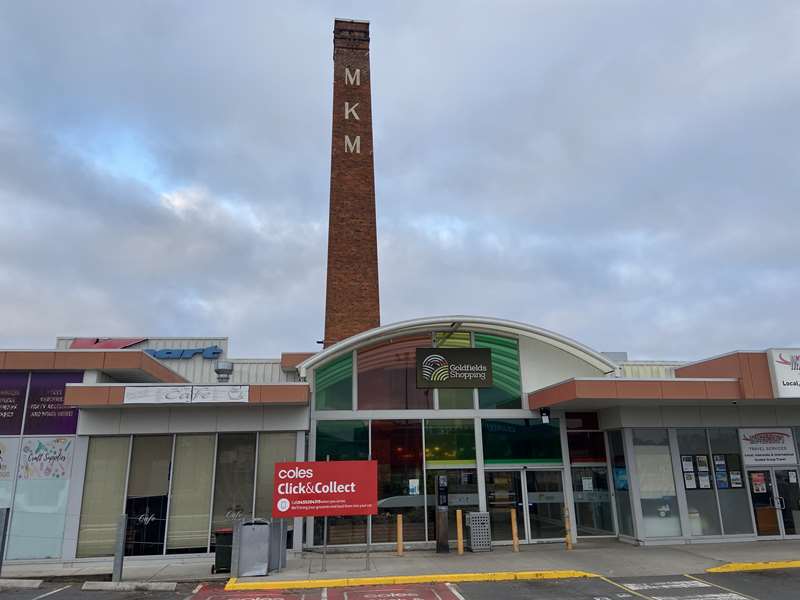
The brick chimney is all that survives on the original two and a half acre factory site of Maryborough Knitting Mills. The Knitting Mills operated between 1923 and 1996 and employed over 800 people at its height during the 1970s. The chimney is 82 feet high, comprises 55,0000 bricks with the letters M.K.M. made of white tiles featured at the top.
15. The Crameri Building
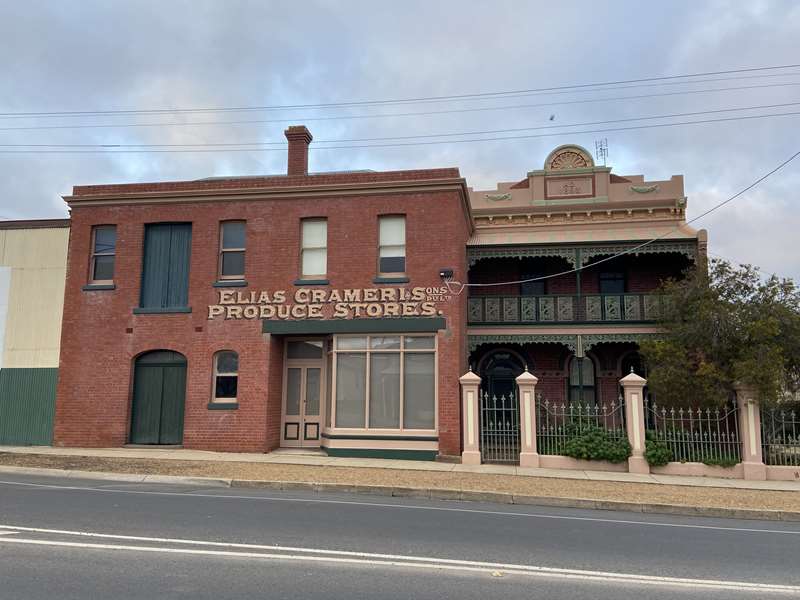
Built in 1893 at the cost of 2000 pounds, this building was owned by Elias Crameri. Elias was a gentleman who did quite well during the gold rush days. The building is still owned by the Crameri family.
Photos:
Location
Station Street, Maryborough 3465 View Map
Web Links
→ Maryborough Heritage Walking Tour Brochure (PDF)








